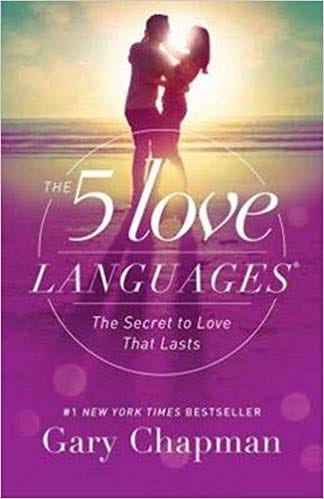A review of The 5 Love Languages by Gary Chapman.
I decided to give online dating maximum due diligence at the very beginning of 2018. Figuring quantity led to quality, I planned to take out 3 women a week for three months.
Figure 1. The math of romance is to figure out how many people you might date in a lifetime, reject the first 37%, and then choose to be with the first person you date afterward who is better than everyone else you’ve dated.
10 weeks later, 30 women later, I was exhausted. But then I met someone incredible. She’s sweet, smart, stunning. She’s a fellow Christian. And she suggested very soon after we started dating that we read together in our own book club.
The very first book we read, and a useful Rosetta Stone of our relationship, was Gary Chapman’s the Five Love Languages. Before I go on, I’d love for you to email me if you have any particularly insightful books into your own relationship.
Figure 2. Not to be confused with the Romance languages which, for Americans, are mostly useless.
Chapman’s premise is that every person creates their own model for what it means to love and be loved – based on their observations of their parents, popular culture (God help us), and others as well as their own personalities, theories, needs, and desires. Chapman’s experience counseling couples as a pastor led him to group people into five broad models he calls the love languages: words of affirmation, quality time, gift-giving, acts of service, and physical touch
The first love language is words of affirmation: verbal and written encouragement to bolster your significant other.
Beware: A common mistake is to make comments pushing something you want them to do but they aren’t necessarily thrilled about. So to say something like “You could be making so much more money!” only is encouragement if that’s what your mate wants. Otherwise your comment can “express not love but rejection.”
If your better half has this love language, affirm their strengths! Give them a living eulogy – both privately and in front of other people. Remind yourself that words are important with a note you will see all the time – and let that note inspire a practice of complimenting a specific thing every day. And, every so often, write a love letter expressing your appreciation.
Figure 3. 50 years – 18,250 days – in, Bernard was struggling with new affirmations: “Buttercup, your earlobes warm your ears – but also my heart.” “Cookie, your hair could tow a truck – it’s certainly towed me along these last decades.” “Lovebird, your body fat could make seven bars of soap – well, that’s normal, you’re so thin it’s probably only 2 or 3”
The second love language is quality time: giving someone your undivided attention. Crucially, this means no other distractions: sitting in front of a television together means Netflix has your attention, not your significant other.
There are two dialects of quality time. The first is conversation. Chapman emphasizes that words of affirmation is really about saying but quality time is really about hearing. He envisions a “sympathetic dialogue where two individuals are sharing their experiences, thoughts, feelings, and desires in a friendly, uninterrupted context.” If your mate has this dialect, discuss the big 2-3 items of each day and listen for how they feel about each – and ask for clarification to make sure you understand.
The second dialect is shared activity: “The purpose is to experience something together, to walk away from it feeling ‘He cares about me. He was willing to do something with me that I enjoy, and he did it with a positive attitude.’” If this is your partner’s dialect, ask them for a list of a half dozen activities they’d like to do together – and do one a month.
Figure 4. “Muffin, I’ve arranged a beautiful candlelit evening for about 10 minutes before I have to go back to work – but, hey, it’s quality not quantity time, right?”
The third love language is gift-giving. Here there can be tension between partners with different views of money. Chapman has two responses to the hesitant prudent: First, you need to consider that the way you treat money is more similar than you may realize: “By saving and investing money you are purchasing self-worth and emotional security. You are caring for your own emotional needs in the way you handle money. What you are not doing is meeting the emotional needs of your spouse.”
Second, the gifts don’t need to be expensive or conventional. Pick a flower. Make something yourself. Bring home a small chocolate. Give to your partner’s favorite charity. Give a book of intense interest to your spouse and say you want to read it together and discuss. Chapman even suggests your presence can be a gift – go to your mother-in-law’s birthday party.
Of course, if you don’t have as many qualms about spending, there are plenty of ideas. But keep track of anytime your partner mentions something they like, how enthusiastically they respond to what kinds of gifts from others, and you’ll be well on your way.
Figure 5. Be careful about regifting that used blender you won as a consolation prize in the office pool. Or giving her that chainsaw you always wanted. Or making a donation in her name to the Human Fund.
The fourth love language is acts of service: doing things you know your spouse would like you to do. Crucially, if this is your own love language, make sure that you explain how loved you feel when things are done for you but only ever make requests, not demands. Chapman has found that a sense of obligation can undermine a relationship but freely given acts of service strengthen it.
If this is your mate’s love language, make a list of all the requests (especially those procrastinated) that your spouse has made of you or, if you have trouble recalling, directly ask for a new itemized list. Think about what your spouse does not enjoy doing and that you could do for them. And then remind yourself with a note on your to do list that says “Today I will show my love by…” — and follow through!
Figure 6. Ladies love a man in uniform.
The fifth and final love language is physical touch. Many men immediately assume this is their love language because of their intense desire for sex – but this is really a broader category. The extreme question to ask is: would you still really want sex if your mate never positively talked about you, never gave you undivided attention, never gave you gifts, never did anything for you – or would the desire be gone?
If physical touch is your partner’s love language, think consciously about how you can touch them whenever you see them – a big hug when you reunite, holding their hand when you walk together, sitting close on the couch, squeezing their shoulder as you pass through a room. “When family or friends are visiting, touch your spouse in their presence. Putting your arm around him as you stand talking, or simply placing your hand on her shoulder says, ‘Even with all these people in our house, I still see you.’” And “If your spouse’s primary love language is physical touch, nothing is more important than holding her as she cries.”
Figure 7. Nothing says love like a high five. Unless you’re a germaphobe. Then you better hope your significant other doesn’t prefer this love language.
Your own love language may be obvious at this point but, if it’s not, think about what you have most often requested or how you’ve been most deeply hurt by your partner. Consider a process of elimination – what what would you give up first? And, of course, find out your partner’s! Both of you can take the quiz at Gary Chapman’s website.
Finally, note that when a couple first falls in love, their relationship is propelled forward by a romantic obsession, the average of which lasts two years (My girlfriend Ashley and I haven’t quite hit that. Stay tuned). But over time, we revert back to a more normal life where our significant other is not the center of our universe – and, because we have different models of love, we may not be attuned to that which makes our person feel loved.
Chapman suggests that each of us has a “love tank” and that we must be spoken to in our preferred love languages to feel fulfilled. When our love tank is empty, we can cast blame and make demands – and we tend to be most critical where we have our deepest need. Our “criticism is an ineffective way of pleading for love.”
Figure 8. Especially after the blitzkrieg of an early relationship, it’s important to maintain your love tank.
But in the drift away from obsession is the opportunity: “Our most basic emotional need is not to fall in love but to be genuinely loved by another, to know a love that grows out of reason and choice, not instinct. I need to be loved by someone who chooses to love me, who sees in me something worth loving.” And ultimately, Chapman proclaims: “Forgiveness is the way of love. I am amazed by how many individuals mess up every new day with yesterday. They insist on bringing into today the failures of yesterday and in so doing, they pollute a potentially wonderful day… The best thing we can do with the failures of the past is to let them be history.”
So, forgive past mistakes (and future ones). Choose to love and be loved. And in choosing, request your own love language and speak your significant other’s.
Figure 9. Click here to buy Gary Chapman’s the Five Love Languages, 10/10. A good book to categorize the ways in which people love and provide ideas how to better love your partner. Once you’ve mastered these, you can move on to having enough kids to save America. For Christians, good follow up reading would also include Tim Keller’s the Meaning of Marriage, which finds the five love languages useful but talks about how only God can really fill your love tank.
Thanks for reading! If you enjoyed this review, please sign up for my email in the box below. I read over 100 non-fiction books a year (history, business, self-management) and share a review (and terrible cartoons) every couple weeks with my friends. Really, it’s all about how to be a better American and how America can be better. Look forward to having you on board!












